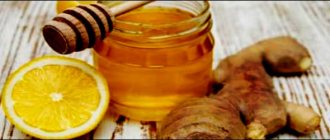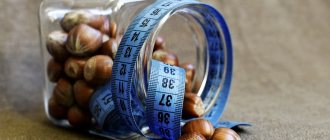Coconut: benefits and harm are two qualities that are inherent in the drupes of a tropical plant, because consuming excessively large quantities of any delicacy can lead to its rejection by the body. The fruit of the coconut palm belongs to the category of goods called “nuts” only conditionally, because scientists say that it is a drupe, which is closer to a cherry or apricot. Regular consumption promotes improved functioning of the thyroid, digestive, and cardiovascular systems, and reduces the risk of developing cancer. Despite its high calorie content, the product is recommended for use as part of dietary nutrition systems: accelerated metabolism leads to weight loss. Detailed information about the beneficial properties of coconut is presented in the text below.
coconut tree
What it is
Coconuts are the fruits of palm trees that grow in tropical climates:
- Philippines;
- Malay Archipelago;
- Malay Peninsula;
- Indian Peninsula;
- Sri Lanka.
The birthplace of the culture is Malaysia, the leading export countries are Indonesia and Thailand.
Description:
- palm trees up to thirty meters high;
- trunk diameter ranges from 15 to 45 centimeters;
- trunk texture – smooth;
- lateral branches are absent;
- in the lower part the trunk is surrounded by supporting roots;
- green leaves;
- leaf shape – pinnately dissected;
- number of sheets – no more than thirty;
- the color of the flowers is light yellow;
- the flowers are not divided into male and female, they are arranged in spikes, the spikes are panicles;
- fruits are round drupes, brown in color;
- the size of the fruits ranges from fifteen to thirty centimeters;
- fibrous surface;
- there are three pores in the inner shell;
- out of three ovules, only one becomes a seed;
- components of the seed – pulp + endosperm;
- The color of the endosperm is initially transparent, but by the time of ripening it acquires a light yellow tint - the oil component of the pulp partially passes into the liquid part.
There is a common misconception that coconut is a nut, since its close relatives are cherry or apricot.
Useful properties of coconut
The health benefits and harms of coconut directly depend on the content of vitamins, minerals and nutrients in it. They are the main substances that are required for the proper functioning of internal organs. For athletes, especially weightlifters, the benefits of coconut pulp are valuable. It is rich in proteins, the properties of which help you gain muscle mass faster, and a large amount of calories saturates the body with energy. Coconut is an excellent remedy for people who want to gain the missing weight without harm to their health.
The benefits of coconut pulp are that it:
- strengthens the immune system;
- improves eye health and improves vision;
- normalizes heart function and cardiovascular system functions;
- is a preventative against the harm of malignant neoplasms.
The beneficial properties of coconut pulp do not end there. Like the liquid, it is an anti-inflammatory and antibacterial agent. In general, coconut can be classified as a natural antioxidant.
Milk has diuretic properties. It helps improve the functioning of the kidneys and central nervous system. It is recommended to drink milk to strengthen your teeth and prevent diseases. The liquid contains cytakins, which prevent the harmful formation of cancer cells. Due to the healing properties of milk:
- has a rejuvenating effect;
- is a prophylactic agent for thrombosis;
- improves metabolism and digestion process;
- strengthens the immune system;
- reduces cholesterol and blood sugar;
- normalizes blood pressure;
- prevents the development of atherosclerosis;
- Helps cure sore throat and other colds.
The benefits of young coconut largely lie in its water. It is found only in unripe nuts and is very different from milk in its sweet-sour taste and calorie content. This is an excellent thirst quencher that has beneficial properties that restore water balance in the human body. Among its beneficial properties is the ability to eliminate infections in the bladder. The composition of drupe water can be compared to saline solution.
The benefits of coconut water for delicate skin are great. It helps relieve lethargy, tones the skin, and stops age-related changes. In adolescence, it is used to eliminate acne.
Benefits of coconut for women
The benefits of coconut for a woman’s body are unconditional. Its beneficial substances help strengthen hair. Coconut enriches hair with nutrients and restores it after damage. The beneficial properties of essential oils, milk, water and pulp are used in cosmetology. They are added to masks with anti-aging properties, creams for dry skin, shampoos and rinses. Facial products smooth out and prevent the appearance of age-related wrinkles and tone the skin.
Without any harm, the health benefits of coconut for older women are significant. Its use in food helps improve the functioning of the urinary and reproductive systems, and also delays the onset of menopause.
Benefits of coconut for men
The benefit of coconut for a man’s body is that it is a strong aphrodisiac and strengthens the reproductive system. Exot serves as a prophylactic for prostatitis and diseases of the urinary system. Despite the fact that coconut has health benefits for men, in some cases it can also cause harm. Basically, this occurs with individual intolerance to the product and with obesity.
Coconut: chemical composition
The fruit of a palm tree growing in a tropical climate, coconut, benefits and harm to the body, the calorie content of which is interconnected and differs from other nuts in its lower calorie content - almost twice the average value - 500-600 kilocalories. The energy value of one hundred grams of the product is 354.0 kilocalories. The high value of this parameter fully determines the need to control the daily amount of drupe pulp or milk consumed and its undesirable use by obese people.
It is worth noting that the data for fresh pulp is presented below: calorie content, amount of proteins, fats, carbohydrates for dried fruits, milk, oil and other modifications are different, which must be taken into account when calculating.
Calories and nutritional value
The paradox is that coconuts as a healthy food are included in various diets, despite its high nutritional value. The calorie content of coconut is approaching 362 kcal per 100 g of product. The dried fruit has a much higher energy value of coconut - 660 kcal per 100 g.
The glycemic index of the exotic is 45 units, which is average, causing a gradual increase in blood sugar levels. This beneficial quality allows carbohydrates to be absorbed gradually, without rapidly increasing their concentration in the bloodstream.
Benefits of coconut
Despite the fact that the palm tree does not grow in our country, drupes and other modifications can be found everywhere on the shelves of retail chains. Often the shavings are a component of desserts, sweet pastries, cakes and other products, and the oil is included in most cosmetic products. A unique ratio of amino acids, the presence of polyunsaturated fatty acids in the complex:
- imparts moisturizing properties;
- accelerates cellular regeneration;
- does not clog pores;
- eliminates imperfections of the epidermis.
It is known that the benefits of coconut milk are similar to the pulp of the fruit, since the product is a mixture of crushed soft part with water. The new physical state expands the range of applications: you can drink it, add it to dishes, use it as a facial toner, thereby nourishing the body from the inside and out. Below is detailed information about the characteristics of water, oil, shavings, and dried fruits.
What is coconut
Coconuts are the fruits of coconut palms growing on tropical seashores. A mature tree reaches up to 30 m in height, while the diameter of the pillar rarely exceeds 40 cm.
Content:
- What is coconut
- Nutritional value and composition
- Beneficial features
- Benefits of coconut products
- How to choose coconuts
- Coconuts in cooking
- How to open a coconut
Interestingly, the name of the fruit means “monkey” in Portuguese. Someone once noticed that the spotted walnut closely resembles the face of a monkey. This is how the tree got its name [1].
Although the fruits of this palm tree are usually called nuts, they are actually drupes. It consists of an upper fibrous layer, a hard shell, and the white fleshy pulp used for food is the seed of the fruit. The liquid inside the nut is scientifically called endosperm, and it is part of the seed. Over time (as the fruit ripens), this liquid turns into a yellowish oily substance. A ripe coconut can weigh between 1.5 and 2.5 kg.
It is difficult to say when and where the first coconut tree appeared on the planet. Although it is clear that her homeland is warm countries, presumably Malaysia. Wild trees are common in both hemispheres, but this palm is grown for industrial purposes in Indonesia, India, Malaysia, Papua New Guinea, and the Philippines.
Urbech from coconut: benefits and harms, how to take
This is the name of a traditional dish of Caucasian cuisine, which was previously made based on nuts. The manufacturing principle is slow grinding, as a result of which the product acquires a paste-like structure. The energy value of one hundred grams of pasta is 354.0 kilocalories: changes in appearance do not affect the calorie content.
The treat can be:
- purchase ready-made;
- cook it yourself.
If we talk about benefits, then all the positive characteristics of the original raw materials are preserved: there is no heat treatment during production. You can eat it in its pure form or add it to other dishes, not forgetting its high energy value.
What's good about coconut?
Many people love this product. You can also try it and make sure that it is not only tasty, but also healthy. Well, for now let’s look at the chemical composition of coconut. After all, we need to know what we eat and how it can affect our body.
The chemical composition refers to those macro- and microelements that are in the product. Coconut is rich in potassium, phosphorus, calcium, iron, iodine, and contains lauric and folic acids. This gives him the opportunity to successfully prevent the occurrence of diseases such as atherosclerosis and fight cardiovascular diseases.
Coconut also contains B vitamins, as well as C and E. They help improve immunity, fight colds and have a positive effect on the treatment of diarrhea. If you are concerned about such problems, stock up on coconuts.
The ratio of BJU in coconut is close to optimal. It contains the most fat – more than 50%. Proteins are in second place, and carbohydrates are in third place. Thus, by eating a small dose of the product, you significantly supplement the daily requirement of these elements.
Coconut: benefits and harm to the body
The positive and negative aspects of the product are often attributed to the pulp of the fruit, but you should still distinguish between butter and milk. The first is 99.0% fat, suitable for internal and external use, the second has a lower calorie content and can also be used internally due to its pronounced anthelmintic effect and externally, replacing a day/evening facial toner. These properties are useful for women, but what value do the fruits of a tropical plant have for other categories of people? The answer to this question is presented in the text below.
Benefits of coconut for women
The pronounced anti-cancer effect is especially relevant for women, because regular use of the product reduces the risk of diagnosing breast cancer and other oncological diseases. Do not forget that the pulp contains a set of necessary substances for the healthy appearance of hair, nail plates, and epidermis.
The oil has specific benefits:
- application on the face eliminates imperfections due to the regulating effect on the skin - the amount of sebum produced by the skin glands is reduced;
- You can solve problems with lack of shine, dullness, fragility, and split hair shafts.
Milk can be used as:
- daily tonic;
- means for removing decorative cosmetics.
A tropical treasure trove of beauty
Grown under the bright rays of the sun, the coconut is a hard ball filled with sweet water. The benefits are hidden in both its pulp and milk.
Coconut contains:
- vitamins of groups B, C, E, H;
- cellulose;
- calcium, phosphorus, iodine;
- potassium, iron, copper;
- useful acids.
However, the main component that helps you lose weight and look young is lauric acid. It stimulates fat burning, improves digestion and dulls appetite. All together this gives impetus to active weight loss.
In addition, being a fairly filling product (due to fiber), coconut does not add extra pounds. The fats that make up the pulp and milk are converted into pure energy, without having time to gain a foothold in the body. For this quality, coconut oil is recommended for use on a keto diet.
The combination of beneficial properties of the fruit also has a good effect on the appearance: the skin becomes smooth, the hair becomes shiny, and the nails become healthy.
The nutritional value
The benefits of coconut for weight loss are difficult to underestimate. The key feature of the fruit is the fat it contains. When dissolved, they turn into special substances that break down the fat layer.
It is due to the high level of healthy fats that the calorie content of coconut is also not low. There are 355 kcal per 100 g of pulp. And milk in the same volume is calculated at only 19 kcal.
Pay attention to these numbers only when calculating the calorie content of your menu. Otherwise, they do not threaten weight loss.
Health effects
The main contraindications to using coconut for weight loss are allergies and obesity.
But for people with gastrointestinal diseases, the fruit will be useful, as it normalizes digestion. Coconut also has a beneficial effect on the health of a pregnant or lactating woman. In addition, the pulp and milk strengthen the heart muscle and blood vessels.
Coconut: contraindications, harm
It is worth knowing that the product contains a high content of selenium, which can accumulate in the body, disrupting the functioning of internal organs. Daily consumption of more than 200 grams (300 for men) can provoke poisoning and, as a result, vomiting, nausea, dizziness, and migraines.
Contraindications for use are:
- ulcers, gastritis during periods of exacerbation;
- individual intolerance;
- children less than three years old
- excess weight (obesity).
How to choose coconuts
When it comes to purchasing coconut products, there are a few things to consider. Still, whole coconuts are more useful than products from these fruits. Meanwhile, finding high-quality fruit outside tropical countries can sometimes be problematic.
It is worth remembering that young nuts contain more pure unsaturated fats compared to more mature fruits. It is young coconuts that have a better effect on the immune system and metabolism, and they are also more effective in the fight against wrinkles. But how do you know how old the coconut is in front of you? Young nuts are usually green in color and have an unusual shape. Their crumb is softer, sometimes gel-like, while in more mature fruits it is hard and less juicy. Brown and “hairy” fruits are mature nuts. They are, of course, also useful, but still not as useful as young ones.
Coconut: rules for selection and storage
To choose a juicy, ripe fruit, it is worth considering:
- the coconut should be heavier than it looks;
- with a uniform surface, without darkening;
- when shaken, you can hear the water splashing inside;
- There are three points on the sharp side, none of them should be soft or moldy.
The presence of an unpleasant odor, soft or damp places causes refusal. Expiration dates:
- opened fruit - refrigerator, no more than two days;
- milk: refrigerator – up to 7 days; freezer – up to 60 days;
- shavings - dry, out of direct sunlight, ventilated place - up to 12 months.
Do not forget that stale fruits may contain molds that are deadly to humans, called aflatoxins, so you should not eat a product that does not look right or has been stored for too long.
What are the health benefits of coconut and what harm can it cause to health?
Coconut has a strengthening, antimicrobial, anti-inflammatory, anthelmintic, diuretic, antipyretic, cleansing and antioxidant effect on the body.
Thanks to these qualities, coconut can be used for:
- Strengthening the immune system.
- Stimulates the work of the heart muscle.
- Regulation of the gastrointestinal tract.
- Treatment of diarrhea.
- Reducing cholesterol levels.
- Colon cleansing.
For men and women
For these categories of people, the permissible daily intake of coconut will only bring benefits. It contains amino acids that are poorly produced by the body with age.
Its regular inclusion in the diet will increase performance, restore vision, strengthen bone tissue and teeth, cleanse blood vessels and the entire body, and normalize digestion.
Is coconut harmful for pregnant and lactating women?
It is useful for them to consume not only the white pulp of the nut, but also the clear liquid. It contains more medicinal substances. You can drink milk that is made from the pulp of the fruit.
This will improve the health of the woman herself and ensure the proper development of the fetus. During feeding, coconut will increase lactation.
Can children eat coconut?
Children after one year can drink coconut milk. It will be especially useful for those who are prohibited from eating cows. It is advisable to give the pulp to a child after three years.
And for those whose activities involve heavy physical labor, athletes are recommended to include coconut oil in their menu. When used, energy is quickly generated.
Coconut: as much as possible per day
High calorie content indicates the need to control the amount consumed daily, so you should stick to the following amounts:
| Floor | Grams |
| Men | 300 |
| Women | 200 |
| Children three years old | 50 |
| Children of ten years old | 100 |
These standards will not lead to excess weight gain or accumulation of minerals in the body.
Vitamins and minerals in coconut
The benefits and harms of coconut for the human body are being studied by scientists. They claim that the composition of its water resembles the composition of blood. Edosperm contains an amount of useful elements equal to those required by the body. Thanks to its rich composition, drupes can be used in many ways. It contains:
- amino acids;
- antioxidants;
- healthy fiber;
- essential oils.
Exot boasts a rich vitamin composition.
Per 100 g of product there are:
| Vitamin | Amount, mg |
| IN 1 | 0,066 |
| AT 2 | 0,02 |
| AT 3 | 0,3 |
| AT 6 | 0,054 |
| AT 9 | 26 |
| WITH | 3,3 |
| E | 0,24 |
| TO | 0,2 |
| RR | 0,54 |
| Kholin | 12,1 |
The benefits of coconut for the body are enhanced by its rich mineral composition:
| Name | Amount, mg per 100 g |
| Potassium | 356 |
| Calcium | 14 |
| Magnesium | 32 |
| Sodium | 20 |
| Manganese | 1,5 |
| Copper | 0,4 |
| Selenium | 0,022 |
| Phosphorus | 113 |
| Iron | 2,43 |
| Zinc | 1,1 |
Due to the rich mineral content of drupe water, it has beneficial properties for active people and athletes, replacing sports drinks.
Brief summary
- According to the data presented above, we can conclude that the benefits of coconut are undeniable for external and internal use, and the high calorie content of the product requires control of the amount consumed.
- It is worth distinguishing between juice, milk, butter, dried fruits, and milk powder - these are modifications obtained from fresh pulp.
- Coconut juice and milk are often mistakenly identified - the former can be extracted by cutting the drupe, the latter is a by-product of preparing the oil.
- A powerful tool for preserving the youth of the epidermis and the health of the hair shafts is coconut oil, which can act as a component of a home or purchased product.
- The product, compared to animal milk, has no cholesterol, so butter has a lower risk of developing mutations in subsequent generations compared to butter, so it can be used for frying.
- The list of contraindications includes individual intolerance, children under three years of age, ulcers and gastritis during periods of exacerbation. Pregnant women should use with the permission of a doctor.
Coconut wrap
In addition to using coconut internally, it can also be used externally effectively. Coconut oil wrap is a great way to restore elasticity, firmness and a healthy appearance to your skin. In addition, the procedure eliminates “orange peel” and stretch marks.
However, there are cases when wrapping can cause harm:
- with an allergic reaction to oil;
- for skin irritation and diseases;
- at elevated body temperature.
To have a pleasant and beneficial treatment at home, you will need coconut and olive (or other moisturizing) oils, a scrub, cling film, warm clothes and a blanket.
Algorithm:
- First, the skin needs to be steamed and cleansed. To do this, take a bath and scrub problem areas.
- Pat your skin dry with a towel, without wiping it dry, and apply coconut oil using gentle massage movements.
- Wrap the application area with film and dress warmly. For a visible result, you need to create a thermal effect.
- Since this wrap option is not extreme, it can be kept for 30-40 minutes. Focus on your well-being.
- After removing the film, blot the affected areas with a paper napkin. It is not necessary to take a shower again.
Before using the oil for wrapping, it is recommended to warm it up slightly. In addition, natural coconut ester tends to harden in cool temperatures.
Potential Health Harms of Coconut
Because coconuts have so much fat, they also contain a lot of calories.
Depending on your calorie needs and level of consumption, they can contribute to weight gain if you don't account for the extra calories elsewhere in your diet.
At the moment, there is still not much quality research on coconuts, cholesterol and cardiovascular disease. Because of this, although eating coconut in moderation is likely to be healthy, if you are at increased risk for developing cardiovascular disease, you should consult your healthcare provider before including this product in your diet.
Additionally, some people are allergic to coconuts, although this is rare. If you have this allergy, you should avoid consuming all coconut-derived products.
Summary:
Coconut is high in calories, so if you're watching your weight, stick to small portions. If you have very high cholesterol or are at increased risk for heart disease, consult your doctor before adding coconut to your diet.
How to break a coconut at home
When starting to open an exotic, you need to prepare two knives: a small one and a large one with a wide blade.
Open as follows:
- Select the most pronounced point.
- Pry it open with a small knife.
- Pour the milk through the hole formed.
- While rotating the coconut, tap it with the flat side of the blade of a large knife for 1 - 2 minutes.
- After a crack appears, continue tapping, turning the fruit around its axis until a crack appears.
When the crack gets bigger, you can try to open the coconut by breaking it.
Video on how to open a coconut
Applications of coconuts
The most popular tropical fruit in cooking. In this area, all the “components” of the nut are actively used:
- water;
- milk;
- oil;
- fresh or dried coconut meat.
Culinary dishes with these ingredients have a beneficial effect on metabolic processes and allow you to get a full energy charge without excess fat.
All kinds of desserts, snacks, salads and much more are prepared with the pulp of the nut.
Coconut flakes have many beneficial qualities:
- resists viral and fungal infections;
- maintains a high level of immune response to external negative influences;
- Helps the body get rid of toxins.
The fibers with which the coconut is covered on the outside have found application in a variety of areas of life.
This material is used to produce:
- ropes and ropes of increased strength;
- brushes;
- carpets;
- various building materials.
Coconut shells are used in the manufacture of household utensils, products for children, souvenirs and musical instruments.
Features of eating coconut on a diet
To avoid the appearance of extra centimeters on your waist, you need to know how to properly consume coconut on a diet. It belongs to high-calorie and fatty foods, therefore, if the recommendations are not followed, it will provoke obesity.
In the morning or evening
It is better to consume nut pulp, butter and milk in the morning and afternoon. These products contain fats that must be actively broken down and provide the body with energy. In the evening, a person’s activity level decreases, which is why excess lipids go into reserves. Capsules and tablets are taken according to instructions.
Daily norm
The safe amount of pulp depends on the gender of the person. Men are allowed to consume no more than 300 g per day, women - no more than 200 g. For butter, the norm is 10-30 g. Restrictions do not apply to coconut milk, but regardless of the type of product, you need to additionally monitor the caloric content of your diet.
Eat before or after eating
It is better to consume coconut before meals. In this case, it allows you to reduce portion sizes. You can eat the product after, but only after 2-3 hours, when the first signs of hunger appear.
Coconut pulp will saturate the body and reduce the feeling of hunger.
Should you eat before bed?
It is not recommended to eat coconut before bed.
In this case, the body receives a portion of fat, but cannot use it up. As a result, lipids have to be sent to reserves. Another factor is the need to digest food. Coconut is not a food that is easy on the stomach. With such a night snack, the gastrointestinal tract will be forced to work hard, which will lead to the appearance of undesirable symptoms: nausea, vomiting, heaviness, digestive disorders, etc.
Is coconut good for skin?
Coconut oil is a favorite ingredient among cosmetologists. With its help, the skin receives high-quality nutrition and hydration, is restored and rejuvenated. Masks and balms made with coconut oil help revive damaged hair and cope with oily hair problems.
Who are coconuts harmful for?
- The harm of coconut has been identified in cases of thyroid dysfunction.
- Excessive exercise is contraindicated if you have a tendency to quickly gain excess weight.
Stages of coconut ripening
The period of complete ripening of a coconut takes about a year. The age of milk maturity occurs approximately six months after flowering.
Distinctive features of the milk fruit:
- green peel;
- Inside, along with the pulp, there is about half a liter of liquid - coconut water;
- Fresh milk coconut water is sterile.
Gradually the skin turns brown. The fibrous layer becomes thicker, but the amount of already cloudy liquid gradually decreases, since as a result of mixing water with pulp, coconut milk is formed, which is widely used.
In an overripe fruit, any liquid is completely absent. However, this does not indicate its depravity. Most often, these “dry” nuts are used to make coconut flakes for culinary purposes.
How and with what do you eat coconut?
Recommended reading: Benefits of strawberries for the body
Thanks to its healing properties, taste and minimal potential for harm to health, the tropical delicacy occupies a significant place in cooking. Adding its healthy pulp adds an exotic touch to appetizers, salads, and main courses. Fetal milk is used to prepare desserts, drinks, and soups. Coconut is combined with poultry meat, especially chicken and rabbit. It is added to porridge. Seafood, potatoes and peppers go well with tropical fruits. It is compatible with other exotic fruits, citruses and strawberries. The combination of coconut and spices is interesting. And the combination with chocolate and caramel is used to prepare confectionery products.
We recommend reading: Potatoes: beneficial properties and contraindications
How and where to store an open coconut
The product of the tropics is not subject to long-term storage. A whole nut can be kept for no more than a month without losing its beneficial properties. The storage of an open coconut is 2 - 3 days, then it begins to ferment.
Milk should be used immediately after opening. You can store it for only a week by sealing the container with it.
The shelf life of the pulp is 7 days. In this case, it should be filled with water. Dried coconut flakes can be stored for the longest time. It can be kept for about a year by placing it in a cool, dry place, tightly closed.
At what age can children eat coconut?
The benefits of fresh coconut are also significant for children. The beneficial calcium it contains plays an important role in the development of the child's teeth and bones. The tropical nut promotes the normal growth and development of the baby, saturates it with energy and nutrients. Drupe oil is a mild, natural remedy that can be used to care for delicate baby skin. But when introducing the product into a child’s diet, it should be taken into account that the child’s stomach is very susceptible. Therefore, it is necessary to give exotic to children from 1.5 to 2 years of age. If a child has an allergic reaction to any food, it is better to delay or minimize the consumption of the fruit. It is recommended to introduce exotic fruits into children’s diets from the age of 3, after checking for the absence of allergic reactions.









